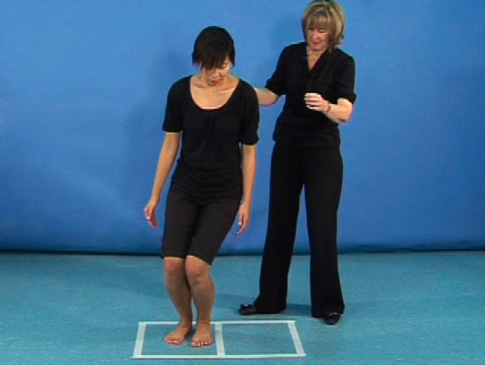AIM:
To improve the temporal accuracy of closed tasks which require rhythm (jumping)
Rationale:
Modified task practice (heel raising and jumping with arms resting lightly on a wall) is performed to promote appropriate timing and force generation; and to constrain excessive movement. Progress to whole task practice.
Equipment:
- Wall
- Tape for marking the floor
Key Points:
- Position the patient facing a wall with the hands resting gently on the wall above shoulder level
- Ensure that the patient’s hands glide up and down the wall as the patient raises the heels/jumps
- Ensure therapist stands close by to steady patient if necessary
- Ensure patient lands on slightly flexed knees
- Ensure timing is promoted by practicing small jumps sequentially, ie, no pause between jumps
Common Errors:
- Patient leans on the wall
- Patient attempts to jump excessively high or uses excessive movements of the arms and trunk
Progression and Variety:
- Jumping without resting the hands on a wall (constrain base of support by marking a square on the floor with tape)
- Add directional changes (jumping forwards, backwards or to the sides of the box)
- Increase speed
- Reduce the base of support by reducing the size of the square marked on the floor
- Hopping on one leg
